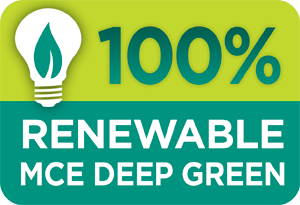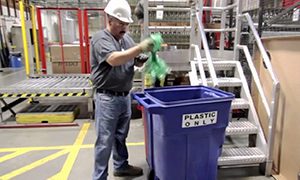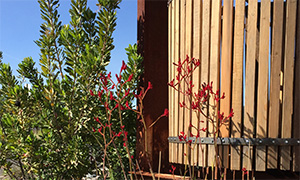Honig Vineyard & Winery has spent the past ten years investing in energy conservation and renewable energy, and it all started with a PG&E energy audit. As a result of the initial audit, which included an assessment of their existing energy use and recommendations for upgrades, Michael Honig and his team changed out all of the old lighting for the highest efficiency lighting with a no-brainer payback period. They then optimized their processing and refrigeration equipment for maximum efficiency, making sure that future energy investments weren’t just subsidizing inefficiencies.
The next step? Evaluating their property for solar. Although the idea of “marginal” farmland in Rutherford is hard to imagine, the family had just that – a small plot of land that wasn’t great for growing grapes, but was perfect for turning sunlight into energy. In 2006, the winery flipped the switch on 819 solar panels, generating 147 kilowatts, covering roughly 1/3 of an acre of land. At the time PG&E covered one-third of the cost, state incentives covered another third and Honig covered a third with a ten year low interest loan.
In the nine years since their initial solar investment, Honig has experienced significant growth, roughly doubling production and building new offices and operating facilities. Looking to expand their installation, the roofs on their new facilities are providing the perfect opportunity. Fortunately, the cost of solar has gone down, while the efficiency of photovoltaic cells has gone up. Starting this month Honig is beginning installation of a new system that will more than double solar energy generation, with 180 kW across six roofs. They expect to have this expanded system paid off in less than six years.
“When it comes to sustainability you can’t be a luddite and invest in one project and say you’re done - it’s all about continual improvement,” said Michael Honig, the winery’s president. “That’s what Napa Green is all about. We could have just said we installed solar and be done, but we’re continuing to invest in new projects.
“Wineries are typically family-owned, generational businesses. You’re not going to stop using power, and power is only going to get more and more expensive. It makes so much sense to invest in solar. It has a five or six year payoff and then you’re saving money.”

When the winery does draw energy, it receives power from 100% renewable sources through Marin Clean Energy’s “Deep Green” program.
Generating solar power continues to be just part of the energy equation at Honig Vineyard & Winery. Michael notes that small changes like running pumps at night and putting in light sensors throughout the facility have made a difference in overall energy consumption. “Some of this is basic - once you focus on turning off unneeded lights you realize how often things get left on. Little changes can make a big impact. Every effort counts,” Honig concluded. Like many vintners, Honig made the switch to MCE Clean Energy in early 2015. The default option delivers power to customers largely from renewable sources. Honig went one step further, electing the Deep Green option for their facility, ensuring that any energy they do draw from the power grid is 100% renewable.
Michael Honig believes a sustainable company culture has to start from the top. “Kristin Belair, our winemaker, has always had this mentality of leaving a low footprint. So we make investments and lead by example. We show the employees we don’t just talk about these things,” Honig said. Errands for the business demonstrate this commitment. Honig noticed that employees were running errands in their private vehicles throughout the week. The solution? Purchasing a 100% electric Nissan Leaf and installing an electric vehicle charging station at the winery. The Leaf gets 126 mpg and can go up to 90 miles on one charge - perfect for local use. “The Leaf and the charging station get a ton of use. A grower showed up the other day just to plug in,” Honig said.
“Living and working on this property I realize I am the caretaker for this generation. I want to pass it on to the 4th generation, and hope it continues to the 5th and 6th generation. That means both the business and the land need to be healthy and vibrant. We’re creating healthier soils, healthier employee and healthier wines.”

Trinchero Family Estates has made waste reduction part of their company-wide DNA.

Reducing resources is serious business at the NVV. Get some ideas and tips for going green.

Cakebread Cellars is championing water conservation with their new green parking lot.